A Studio Made for Musicians: Enter Magic Door Recording
New sounds are busy being born all the time – but where do they come from?
For those who crave fresh sonic experiences, look to this reliable source: Magic Door Recording. An elite audio facility in Montclair, NJ, creativity takes top priority here.
Without a doubt, Magic Door is technically sound. But that’s not the unique selling proposition put forth by its founder, Ray Ketchem. A drummer, producer, and mixer, as well as a commercial illustrator, Ketchem designed Magic Door to be a place of musical inspiration, first and foremost.
Artists from world renowned to strictly indie agree. Since it opened in 2017, this New Jersey recording studio has been attracting well-known names like Guided by Voices, Luna, Versus, Leslie Odom Jr., the Kinks’ Dave Davies, Kenny Garrett, WFMU, and producer/mixer/A&R exec David Bendeth. Ketchem’s own acclaimed outfit Elk City works there regularly, plus a long list of bands and performers spanning multiple genres. (Visit here for the studio’s latest Spotify playlist.)
Visitors are drawn to Magic Door by multiple enticements. Acoustics were architected by loudspeaker legend George Augspurger, while the distinct visual aesthetic – soothing greys shot through with bursts of color – comes from Ketchem. A graduate of the Art Institute of Pittsburgh, Ketchem made sure his studio reflected a creative headspace.
As you’ll see, Ketchem eschewed an analog console, opting for a streamlined workflow and carefully curated gear. Wearing his producer hat, he de-emphasizes polish and perfection in favor of the emotional highs that emerge from musical spontaneity. All made possible through serious listening – an activity that takes on new meaning at Magic Door.
Read on for Ray Ketchem’s alternative take on audio and the studio business. Producers, engineers, mixers, and musicians alike are sure to get new ideas from this SonicScoop interview.
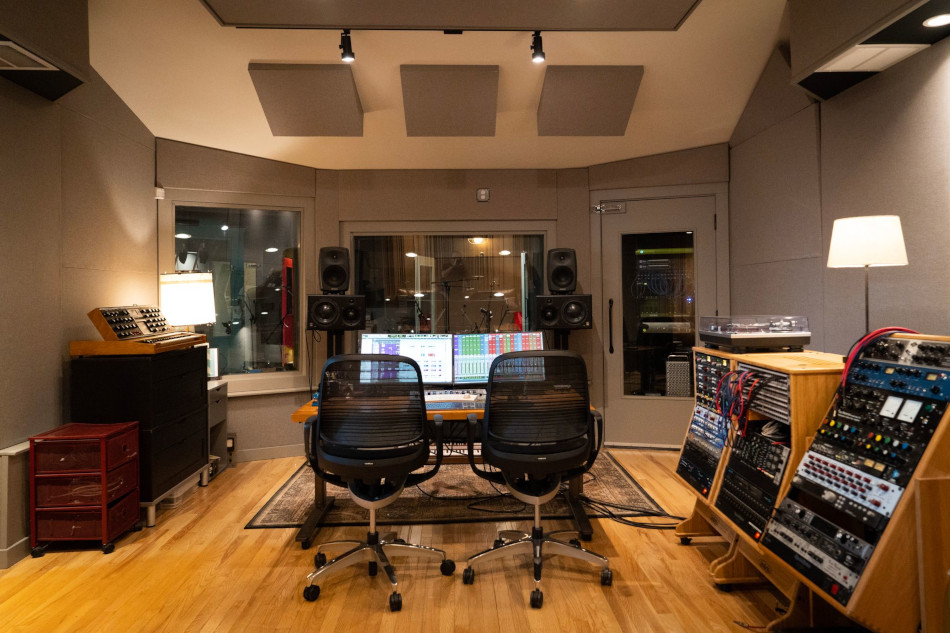
The George Augspurger-designed control room of Magic Door in Montclair, NJ. (Photo credit: George Kopp)
My first question is: Let’s geek out on drums! If you could have a party with some of your all-time fave drummers, who would you invite?
Okay. Okay. Well, my all-time favorite drummer is John Bonham. The way his groove was so strong, the way he uses the kick drum was just so incredible and very influential to me. Because I’m primarily a rock fan, I’m obliged to say Keith Moon because he’s so unorthodox and what he’s playing should not work as you understand. And yet, no one sounded like him ever. He’s such a unique drummer.
Probably my favorite drummer as far as influencing me though would be Charlie Watts. I love his feel and his simplicity. And Stan Lynch, who used to be in The Heartbreakers. I’ve always thought his drumming was great. I could go on all day.
With studios like Sound on Sound also in town, Montclair seems to be a quiet hot spot for recording. What is making that area a good place to record?
The reason I chose the location is I’m only a couple of blocks from Bay Street train station, so people coming out from New York or Brooklyn can get here easily. And the studio is right in the downtown area so you’re just a couple of blocks away from all the restaurants and bars and theaters, museums, and all that stuff. If bands are here for a little while and they’ve got some time off, they can wander up the street and find some great food, and places to hang out. They don’t have to hang in the studio all the time.
Geographically, where are your clients coming from? How many are coming from New York City versus New Jersey versus other locations?
I would say New York and New Jersey is about half and half between those two. Some bands have come from LA, a band came from Detroit. And (A&R exec/producer/mixer) David Bendeth will have people come in from just about everywhere to work with him.
What’s great about having him as a client is he’ll usually book the studio for months at a time. He’ll do a big block of time and say, “I need 40 days or 60 days,” or something like that. It’s that old school – he works very slowly and meticulously, and the end result is very polished. His projects are not rushed.
Studio Design: A Musical Perspective
You’re a drummer and producer, as well as a studio owner. How did your own musical experiences shape the way that you approached the design for Magic Door?
I wanted to make it comfortable for musicians to be here, so I tried to design the studio as a place that I would want to spend time. It had to be a vibey, inspired space that didn’t quite look like a traditional studio. So many studios have that Avatar/Power Station look. And I was like, “I don’t want to do that. I want to do something different that looks unique.”
I also wanted to take into account that I’m still an active musician. I wanted to have a place where I would play and where my band would record, so I was also taking that into consideration. I guess I’ve really thought of it from the musician’s perspective the whole time.
That being said, I hired George Augspurger who acoustically designed the whole place. The design is meticulous, the rooms all sound great. He was incredible to work with. It’s all designed by a pro, of course, but then I chose the aesthetics after the rooms were built.
What is the role that visual aesthetics play in putting together a creative and inspiring environment?
The first reaction I get from people when they see the studio for the first time is, “Wow, I want to hang out in here. I want to record in here.” That wow factor was really important to me. But I also was working within budget constraints. I had to think about, “What can I achieve that’s going to look good that’s not going to cost a million dollars?”
It also really was an important thing for me to feel like, “What would I feel like behind the drum kit sitting in that room? Would I enjoy it? Would I think it’s cool to be in there?”
The Gear: Making Careful Choices
What’s your approach to the control room – tell me about what’s in there and what’s not in there?
Well, what’s not in here is an analog console, and that was a decision I made when building. I (previously) had a console that was always in need of repair, and it was like coaxing an old car along or something, and the studio was costly enough to build, so I thought, “Do I really need a console?” And at that point, I was either mixing with a summing mixer, which I still do sometimes, or mixing in the box and using mostly outboard mic pres anyway.
So I invested in more mic pres, and I love using outboard mic pres so I can choose flavors for recording. For mixing, I use the McDSP APB-16, that is just an incredible analog processing box. It’s a pretty modern setup. I usually will record directly from the mic to the mic pre right into Burl converters. If I need to patch into an EQ or some compression when recording, I will. But I’m pretty pure in that way. I try to get the source to sound good at the mic.
Are you working in Pro Tools, and do you have a control surface?
I use the Softube Console 1, and I have the Dangerous Monitor ST (monitor controller). And yes, it’s all Pro Tools, which I’m front of all the time. For converters I’ve got a Burl Mothership with 16 I/O and 16 in and out of Avid HD.
Can you tell me a little more about the McDSP APB-16, and why that was right for you?
As soon as I heard it, I was like, “Oh, I have to buy this now!” It just has an analog goodness to it that is different from plugins. It’s another flavor. I use it on my mix bus. I’ll use it on lead vocals. I’ll use it on the drum bus.
Essentially what you’re doing is with one Thunderbolt cable, you’re sending up to 16 channels out to D/A, and then you’re going into analog processing and then sending it back to A/D. It’s all in a split second, so you’re controlling it as if it’s a plugin but you’re actually processing in the analog domain.
It was a big studio investment for me, but I was mixing a lot of records when I bought it and I thought, “This is going to make my work better.”
Since you’re going console-less and depending on mic pres, tell me about the spread of mic pres that you’ve gotten. How do you decide what gets into the studio?
Well, the old standbys, API and Neves. I have a Rupert Neve Designs 5025 Dual Shelford Mic Pre, which is a really beautiful premium mic pre. I use that for lead vocals or maybe the main guitar track. And then I’ve got some BAE 1073s. I’ve got six channels of those, and those are just incredible for guitars or drums or whatever you want to throw at them. I usually use them for guitars.
And then I have eight channels of API 3124s, for drums and then some more Rupert Neves, the 5024, which is a four-channel-in-a-single-rack unit. I’ve got four channels of the AEA Ribbon pre, the RPQ Ribbon. Those are great for the vintage RCA 44-BXs, which are amazing sounding mics.
What’s great about those AEA ribbon pres is they’ve got dedicated outputs that don’t have phantom power at all. So even if you have an inexperienced engineer and you engage phantom power, I’ve got it hooked up to where you can’t hit the vintage ribbons with phantom.
“I Really Just Listen”
Let’s circle back then to your philosophy about getting the sound right from the microphone going in. Even though that seems obvious, some people need to be reminded that that’s a good way to go. Can you tell me more about the art and the science of being able to do that?
For me, it’s the art, not the science. I’m not a science guy at all. I really just listen. And if I don’t like what I’m hearing from a mic on a source, I will swap out the mic or I’ll go and move the mic until I like what I’m hearing. It’s really years of experience of choosing the right mics for the right source.
And then knowing what it should sound like, going out and listening in the room, listen to what the person sounds like singing, and then choosing the right vocal mic for them. Do they sound like themselves when they’re singing into the microphone that you put in front of them?
Or you’re micing that guitar amp, does it sound good to you as it’s being picked up by the microphones that you’re putting in front of it? Are you putting them in the right spot? If there’s something wrong right away you’ll just say, “Oh wait, something’s up. I have to go move a mic or swap a mic or go listen to what this person is playing because something doesn’t sound right.”
I think often what needs to be done is just listening to good, well-recorded or well-engineered records. You should know what the drums should sound like, or the guitar or the bass. You have to have an idea of what you’re trying to dial in. And you should be able to get there with a microphone and a good mic preamp and a good converter with no EQ.
I like high-pass filters on my mic pres, because I don’t want to have a bunch of mud in the low end if I don’t need it. But low-end filtering is almost all of the EQing that I do when recording. I might EQ the kick drum mics. Those usually need a little bit of love, but other than that, going in, I’m not EQing a lot.
On the excellent 2022 Elk City record Above the Water, for example, I heard some unconventional sound sources. I’m curious if you can recall sometimes perhaps where you were severely challenged in the studio to capture a sound the way you wanted to, and how did you handle that?
I’ve learned that the room itself is just a big part of the sound of the recordings you’re going to make.
For years, I worked at home and I used to have my control room in the living room of my house, and the basement was the live room. I would experiment with things I would read about, “Oh, this room mic or that room mic,” and I could never get it to sound right because you’re dealing with compromised acoustics. Whereas I’ve learned that if the live room or the room you’re recording is well designed, you can put a mic anywhere, it’s going to sound interesting or good.
I like unconventional sounds. Sometimes I don’t like everything to be too polished or too perfect. I like when things are weird, so if the artist is okay with it I’ll experiment with, “Let’s put a mic all the way over here, or let’s try putting a mic this low or whatever and see what we get.”
A lot of Above the Water was done by recording where we were just jamming literally, coming up with stuff on the spot. It might have been things where it’s like, “Oh, we’re not really set up for an adventurous recording.” We’re actually just writing, and then we liked the performance well enough that we were like, “Oh, let’s use that. Let’s flesh that out.”
How to Record Drums: “The Engineering is the Easy Part”
Let’s talk about some of the artists you’ve worked with, Guided by Voices, Luna, Versus, among others. What’s the common thread among the artists that come to work at Magic Door?
Everyone you just named comes from similar scenes, through an underground aesthetic of guitar bands, so a lot of the people know each other. That’s how I’ve gotten to work with some of those bands. For example, Elk City opened some shows in Spain for Luna, and that’s when I met them.
Luna’s guitar player, Sean (Eden), who ended up also becoming the guitar player for Elk City, we just met backstage and hit it off. So it was more of, “Oh, I like this person.” When it came to them working on a record, he said, “Hey, I’m unhappy with the way this is mixed. You want to take a shot at mixing some of this stuff?” What I’m saying is it’s more making friends with people, knowing how to work with people and being someone that they want to work with.
With Guided by Voices, I got incredibly lucky because they really like the drum sounds, so I became known for recording their drums. I’ve recorded the full band also, but if you look at some of my credits I’ve done all the drums on a bunch of their records.
Magic Door is a great sounding drum room. That was really important to me, so that was something that I talked to George Augspurger about. “That’s really going to be important for me, George. I want the drums to sound amazing.” So he focused on that.
What do “amazing sounding” drums mean to you? Because that’s definitely a subjective term.
We could circle back to that first question about the drummers that I mentioned before. Charlie Watts, I love the way Charlie Watts’s drum sound. Jim Keltner, I love Jim Keltner’s drumming and drum sounds. Sean Pelton from “Saturday Night Live” has been here a few times for some sessions and his drumming is incredible, and I love the sounds he gets. Kevin March from Guided by Voices is a good friend of mine, and he’s an amazing drummer and knows how to coax great sounds out of the drums.
So much of what makes a good drum sound, as I’m sure you know, is the drummer themselves, knowing how to hit the drums, knowing how to coax the sound out of the kit in just the right way. I can mic up the kit, it’ll sound great to me. Then a different drummer will come in the next day and I haven’t moved anything, and suddenly the drum sound isn’t working at all.
Say there’s an emerging engineer who’s reading this and wants to know how to level up their own drum engineering, what advice would you give to them? Where should they pay more attention to help them capture a better drum sound?
I would say the most important thing are the drums themselves. Do the drums sound good in the room to you? Are the heads good? They don’t need to be new heads, but do the drums actually sound good? If not, then make them sound good. Work on them until they actually sound good to you. And then the next part is going to be the drummer.
The engineering part really is the easy part. I mean, you could get a great drum sound with a bunch of SM57s. You don’t need expensive mics and you don’t need a lot of mics.
I like to have quite a few mics, maybe about 12 mics on a kit. But that really is just for colors at mix time, where if you’re like, “Oh, I want to bring the hi-hat up for that bridge section, or I want to have some fun bringing in the ride cymbal a little louder during that solo section or whatever,” it just gives you the option. Whereas if you have limited mics, you’re like, “Well, we didn’t have a mic on the hi-hat, so I can’t do anything with that.”
The Music Producer Role: Pursuing Imperfection
We’ve been in the weeds with the engineering here, let’s also talk about being a music producer. How do you define that role? What’s the producer there to do and not to do?
It’s a tricky situation because I feel like a good producer needs to know when to interrupt and speak up, but they also need to know when to let silence fall. They need to give the artist a moment to breathe and to concentrate.
I’ve witnessed other producers being up the butt of the artist a little too much. A good producer has to develop a relationship and build trust with the artist.
You’re helping the artist try to achieve their vision. That can be an active role, such interjecting, rearranging, changing tempos, changing keys, anything like that. I do all those things that if I have a relationship with the artist and I’ve gained their trust, or that’s our agreement and they want me to be doing those things.
But there are other times where the producer role can be more passive. Where you’re just there to be a support system. The artist has the vision that they’re going for, and you’re there to make sure that they stay on track.
The prevailing wisdom is for the artist to be super tight and ready with their songs when they hit the studio, but you’ve disputed that notion in your producer work. Can you expand on that?
I don’t like when things are too prepared. I like when the artist has left a little bit up to chance, where we might get an original moment or they’re going to be open minded enough that if you say to them, “Hey, what if we speed this up by 10 bpm?” you’re not going to completely wreck their whole world.
If they’re so prepared that they’ve rehearsed it and rehearsed it and rehearsed it and rehearsed it, and they’re just coming to capture their performance, that doesn’t give the production much room to grow. Then you’re just documenting what they’re doing. It’s almost like they’re coming into your studio to perform live and you’re there to go, “Hey, that sounded good. Good job guys!” And that’s it.
Which is fine, and maybe that’s appropriate, but I like when it’s a little bit more of, “Let’s get into the weeds a little bit, have some fun and get really creative. Maybe these songs will take some shapes that you guys didn’t expect and maybe you’ll surprise yourselves.”
I love when an artist says to me at the end of a recording, “Oh my God, I never could have envisioned the way it came out. I’m so happy. I had no idea that those songs could be the way… They just came out so much better than I ever would’ve dreamt.” Then I feel like, “We really accomplished something together.”
Studio Ownership: Hazards and Happiness
It’s a dream of many artists to own their own studio. How does this benefit you with your most important personal projects, such as when it’s time to record with Elk City?
I wish I had done it sooner. Having a commercial studio opened up all kinds of opportunities that would not have happened when I was working out of my house. I wouldn’t have had David Bendeth book 60 days at my house.
And other things too. WFMU, one of my favorite radio stations in the world, suddenly wanted to host performances and interview people here. Dave Davies from The Kinks came for an interview and a performance. That wouldn’t have happened at my house. I got to work with Kenny Garrett, great jazz saxophonist. He wouldn’t have come to my house.
I built the studio because of my family, because the house was relatively small and my sons were getting bigger. And it became, “We just can’t have a family living in this house and also have a recording studio in it in this way. Something needs to change.” It was like, “Well, should we get a bigger house?” That seemed like it would just be the same problem, but on a bigger scale. So we decided to keep the smaller house and separate out the studio.
And it’s been great, though I will say I didn’t take on any partners. I did it all with money that I had earned over the years. And financially, it’s not an easy task. Luckily, my head is above water, but it’s definitely one of those things where I’ve realized that much of the studio business, some of your competition out there are people who open studios because they have a lot of money and they can just buy whatever console they want and buy all kinds of whatever.
I can’t compete on that level with those people, but what you get with Magic Door is someone who is a musician and who cares about producing the best music he can.
Does it feel challenging to have so many roles and to wear so many hats? As a studio owner, producer, mixer, engineer, and drummer?
I get so involved in the music production part, the mixing. I love mixing, I love mastering, I love recording people. And I lose track of time with it. The day goes by so quickly. I love all of that.
The studio owner part, I don’t really care that much for. I’m not what you would call a traditional businessman at all. I remember the acoustic consultant that I hired to help oversee George’s designs, said, “Why don’t we go to lunch and you can share your business plan with me?” And I was like, “Uhhh, business plan?”
I’m a musician and an engineer and producer. I don’t think in terms of business, I think in terms of making art and creating cool stuff. Did I answer your question? I don’t know – I got lost.
I think what you said there will actually be very validating to a lot of people who read this and are in the same situation. Finally, what do you suspect that you still have left to learn? What do you know that you don’t know?
The reason it’s still fun is because there’s so much I don’t know, but I think that I’ll go to my grave feeling that way. That’s part of the fun of creation. If you knew it all, then you wouldn’t keep exploring. You wouldn’t keep searching. Why would you keep going down the road if you knew what was at the end?
You have to keep moving forward and hopefully you’re learning every day. I love technology and I love what you can do with technology now. Sometimes I think about how I started doing this in 1991 and when I look back on my first studio, I’m like, “Oh my God, how did I do anything?” I had an old analog 16-track and a crappy console and a couple of mic pres, but now with technology there’s so much you can do.
But there’s always going to be new things. There’s always going to be new discoveries you make or new ways to do things. I’m always learning from musicians who are here. They’ll teach me about various guitars or guitar settings or amp settings, or use this pickup with this on this guitar and through this amp, but at this level…It’s all kinds of things that are left to learn. I like to think that I have a wealth of knowledge already inside of me, but I definitely am still wide-eyed about everything.
— David Weiss is an Editor for SonicScoop.com, and has been covering pro audio developments for over 20 years. He is also the co-author of the music industry’s leading textbook on synch licensing, “Music Supervision, 2nd Edition: The Complete Guide to Selecting Music for Movies, TV, Games & New Media.” Email: david@sonicscoop.comay
Please note: When you buy products through links on this page, we may earn an affiliate commission.







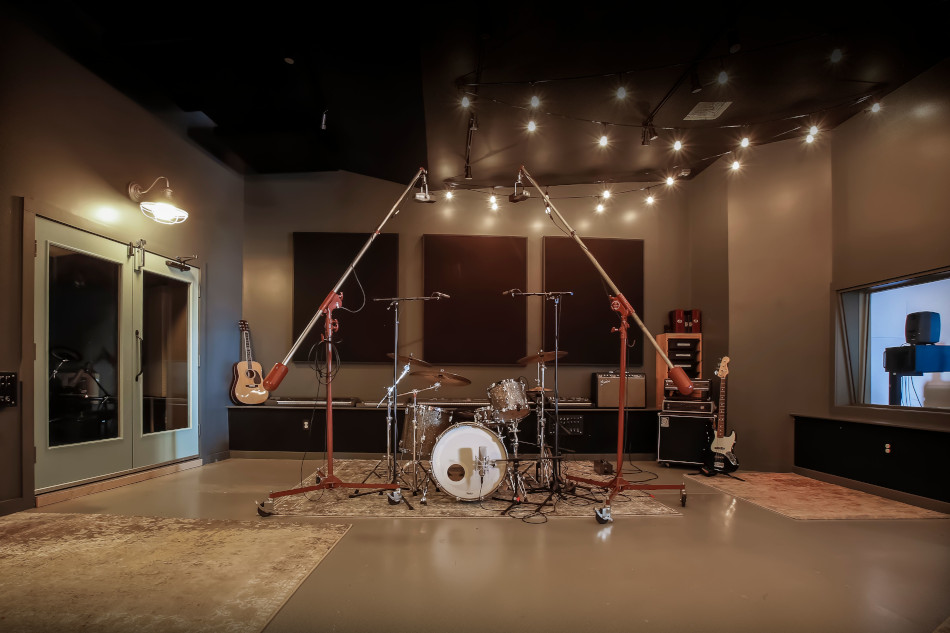
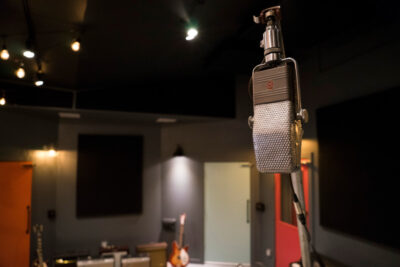
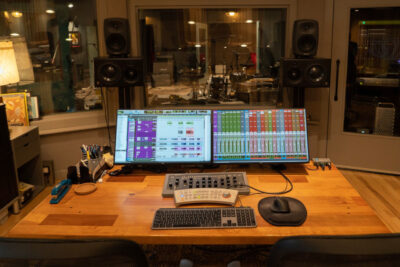
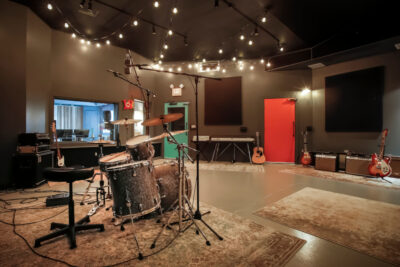
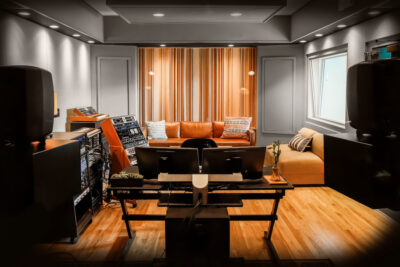
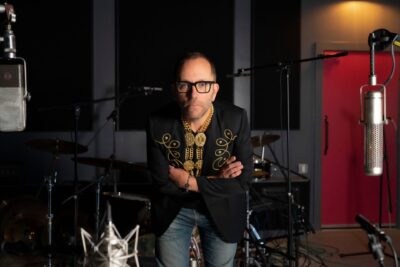
[…] Source link […]